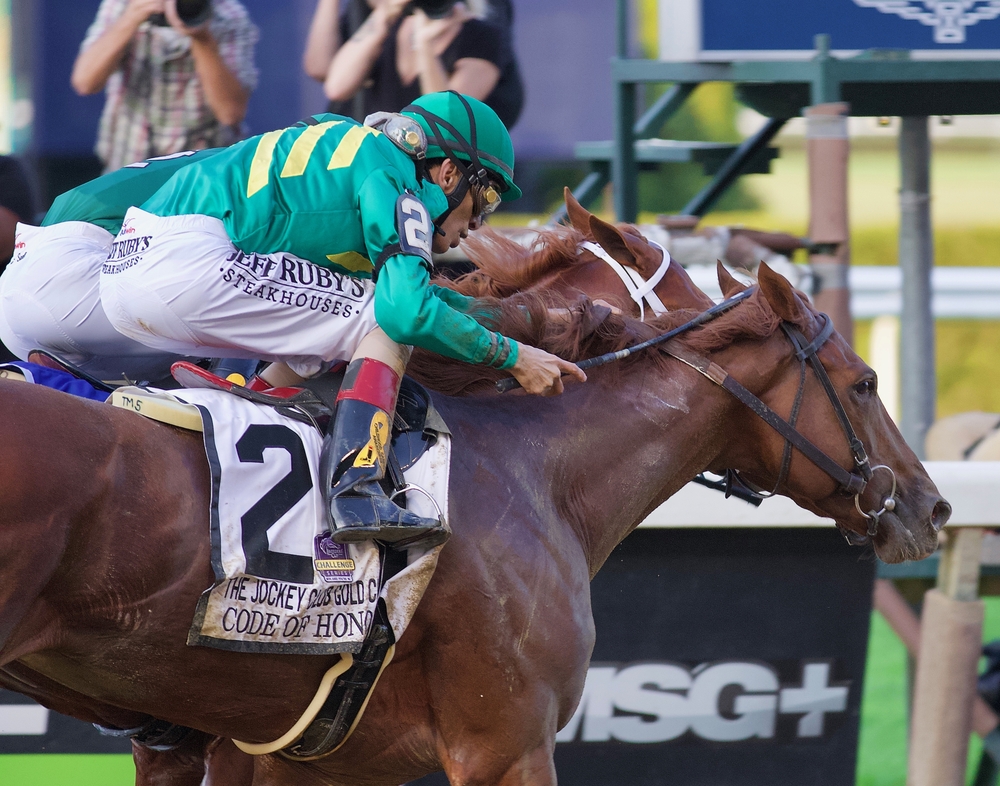Two-ball betting in golf presents an alternative approach for bettors looking to steer clear of the uncertainties of wagering on outright tournament winners. This betting strategy focuses on head-to-head matchups within a golf round, offering bettors a simplified and strategic form of engagement. The appeal of two-ball betting lies in its straightforward nature; bettors analyse the performance of two golfers playing the same round and place their wagers on which one will fare better. This eliminates the variability introduced by the larger field, providing a more controlled environment for making informed betting decisions.

The value in golf betting markets often hinges on understanding the nuanced aspects of the sport, including the current form of golfers, their historical performance in similar conditions, and their skill profiles. Two-ball bettors must consider these critical factors and integrate them into a cohesive strategy. Regular monitoring of golf news, tournament updates, and golfer statistics is also paramount. A bettor’s ability to assimilate this data into their betting decisions can significantly enhance the chances of consistent returns from two-ball bets.
Key Takeaways
- Two-ball betting offers a strategic, head-to-head alternative to traditional golf betting.
- Bettors require a thorough analysis of golfer performance and conditions to inform their decisions.
- Keeping informed with the latest golf news and updates is crucial for strategic betting.
Understanding Two-Ball Betting in Golf
In two-ball betting, punters place their wagers on which golfer out of a pair will perform better in a specific round. This betting strategy narrows down the focus from the entire field to head-to-head matchups, offering potentially better odds and a simpler form of sports betting.
Basics of Two-Ball Betting
Two-ball betting is a form of sports betting in golf where a bettor predicts which golfer, in a pairing, will post the better score over 18 holes. It is a head-to-head contest between two golfers, and unlike traditional betting on the overall tournament winner, it concentrates solely on the performance between these two competitors. This type of bet provides a straightforward option for bettors who prefer not to navigate the complexities of wagering on a whole field.
Need Help Beating the Bookies?
Our expert betting tipsters have been taking cash off the bookies since 2014! If you need a helping hand with winning then why not check them out?
Browse Our Tipsters
All Weather Place
Our Expert AW Racing Tipster Focussing on the Place Market With Bets Recorded to BSP
Visit PROFILE2-Ball vs 3-Ball Betting
While two-ball betting involves a head-to-head matchup, there is also the option of three-ball betting. Here, bettors predict who will have the best score out of a trio of golfers paired together. Three-ball betting typically takes place during the first two rounds of a tournament when players are grouped in threes. The odds in three-ball bets can be different because of the three-way option which includes an additional golfer, making it slightly more complex but offering more betting scenarios compared to two-ball bets.
The Significance of Dead Heat Rules
The term ‘dead heat’ is crucial in understanding two-ball and three-ball betting. Dead heat rules are applied when two (or more) golfers end with the same score, resulting in a tie. Under dead heat rules, the payout for a winning bet is reduced as the stake is divided by the number of players tied. This consideration is essential for punters since it impacts the potential return on their bets. Therefore, when engaging in two-ball betting, understanding how a tie result affects the odds and potential winnings is vital for informed decision-making.
Assessing the Value in Golf Betting Markets

In the realm of golf betting, discerning the inherent value in markets is paramount for bettors who aim to sustain profitability. They must be adept at analysing various factors that sway odds and comprehend the influence of bookmakers‘ vig on potential returns.
Evaluating Odds and Lines
A bettor must meticulously evaluate the odds and lines offered on potential outcomes. In the context of two-ball betting, where one bets on one of two golfers in a pairing to outperform the other, the prices for each golfer should reflect their form, head-to-head records, and course suitability. The key is to identify discrepancies between a golfer’s true chances of winning and the odds presented by the sportsbooks.
- Favourable odds: Indication of value; the potential return exceeds the risk.
- Unfavourable odds: Low-value; the potential return does not justify the risk.
Importance of Shopping for the Best Lines
Bettors should consistently shop across various bookmakers to secure the best lines available. Slight differences in the odds can significantly impact long-term profitability.
- Comparison: Research and compare the same market across multiple sportsbooks.
- Account creation: Bettors often need accounts with multiple providers to take advantage of line discrepancies.
Understanding Bookmakers’ Vig
The vig, or the bookmakers’ margin, is built into the odds and represents the fee bookmakers charge for taking a bet. Understanding the vig is crucial as it affects the actual value bettors receive on their wagers.
- Vig impact: Higher vig diminishes potential profits, making it harder to find value.
- Calculation: Bettors can calculate the vig percentage to understand the bookmakers’ advantage.
By assiduously evaluating odds and lines, relentlessly shopping for favourable lines, and comprehending the vig’s effect, bettors can enhance their strategies within the golf betting markets.
Golfer Performance Analysis
In assessing whether two-ball betting is a suitable strategy in golf, one must consider the specific aspects of a golfer’s performance. These factors include their recent and current form, their history on the particular course, and a detailed look at their playing statistics.
Recent and Current Form
When analysing a golfer’s potential in a head-to-head matchup, their recent and current form are vital indicators. To evaluate this, one should examine their last few tournaments and consider factors such as:
- Finishing positions: A consistently high-ranking golfer may be favourable in two-ball betting.
- Round scores: Patterns in a player’s scoring can signal stability or volatility.
- Cuts made: Making consecutive cuts implies a reliable level of play.
Attention to these details can reveal a golfer’s competitive edge or highlight possible concerns about their current performance.
Course History and Suitability
A golfer’s history on the course can significantly influence their success. This section digs into past performances to forecast how well a golfer might contend. Consider:
- Previous tournament results at the same venue.
- Suitability to the course: Does the golfer’s playing style match the course characteristics?
A track record of strong finishes indicates familiarity and comfort, while a series of poor results may suggest potential difficulties.
Statistics and Strokes Gained
Finally, a more granular look at a golfer’s statistics can uncover nuances in their game. Strokes gained is a complex metric that assesses a golfer’s performance relative to the field. Focusing on areas such as:
- Driving accuracy and distance
- Green in regulation percentages
- Putting averages and putting strokes gained
This statistical breakdown assists in highlighting strengths and weaknesses in a golfer’s game that could be pivotal in a two-ball bet scenario.
Strategic Betting: Making Informed Decisions
When approaching two-ball betting in golf, it’s essential to employ a strategy that’s informed by diligent research, spreads risk across various tournaments, and involves careful bankroll management.
The Role of Research in Betting
Research is pivotal in making enlightened decisions in two-ball betting. Bettors should comprehensively analyse golfers’ past performances, current form, and their history on the course being played. Factors such as weather conditions and tee times can also influence the outcome of a head-to-head matchup. This level of detail allows for a more strategic approach to wagering.
Diversifying Bets Across Tournaments
Placing wagers across multiple tournaments is a strategy that can minimise risk and maximise potential returns. Diversification involves not putting all one’s resources into a single bet or tournament. By spreading bets, one is less vulnerable to the unpredictability of a single tournament’s results.
- Tournament Selection: Choose a variety of tournaments factoring in course difficulty and the field of players.
- Bet Allocation: Budget your wagers so that no single tournament carries the majority of your bankroll.
Managing Your Bankroll Responsibly
Managing one’s bankroll is critical for sustainable betting. Bettors must decide on the proportion of their bankroll to allocate to individual bets and stick to it. It is prudent to never wager more than one can afford to lose, ensuring that betting remains a form of entertainment, not a financial burden.
- Set Limits: Establish financial boundaries for each bet and overall spending.
- Record Keeping: Maintain accurate records of bets, outcomes, and bankroll changes.
Key Considerations in Two-Ball Betting
When engaging with two-ball betting in golf, it’s crucial for one to grasp the inherent variability of results, understand the specific rules and mechanics of betting, and recognise the distinct advantages such betting offers over attempting to select an outright winner.
Variance and Its Impact on Betting
Variance in golf betting can be significant due to the unpredictable nature of the sport. In two-ball betting, one gambles on which golfer in a pair will score better over a single round of 18 holes. Unlike outright winner bets that pit a player against a large field, two-ball betting reduces the competition to just two players, thereby lessening the variance. However, each golf course and daily playing conditions still contribute to unpredictable outcomes, making it essential for bettors to consider these factors.
Rules and Mechanics of Golf Betting
The rules and mechanics of two-ball betting are straightforward yet unique to this form of wagering. Bettors select between two golfers, focusing on who will achieve the lowest score over 18 holes. Should both golfers end with the same score, the dead heat rule applies: if a bet was placed on either golfer to win, it is considered a loss, unless the betting market offered a price for a tie. Moreover, if a golfer withdraws before starting the round, all bets on that pairing are typically voided.
Advantages of Two-Ball Betting Over Outright Winner Bets
Two-ball betting presents several advantages over placing bets on an outright winner. Bettors are dealing with a binary outcome between two competitors rather than predicting the winner from a large field, which can often span over 150 players. This targeting allows for more informed decisions based on the direct comparisons of the pair’s performances, course history, and current form. It can also increase the chances of regular wins, as the bettor’s focus is narrowed down to two players in each bet rather than the entire field of a tournament.
Popular Golf Tournaments and Betting Opportunities
This section explores the rich variety of betting opportunities available across different golf tournaments, focusing on the major championships, PGA Tour events, and the plethora of special bets that can be placed.
Betting on Major Golf Championships
The Masters, The British Open, and other major golf championships are prime betting grounds due to their popularity and illustrious fields. For instance, placing bets on favourites like Rory McIlroy to win The Masters or Jon Rahm to clinch The British Open can provide both excitement and potential rewards. Each major often unfolds over four days, providing a spectrum of betting possibilities from the outright winner to more intricate bets such as head-to-head matchups or performance in individual rounds.
Exploring Betting Options in PGA Tour Events
The PGA Tour presents a weekly opportunity for punters with events running almost throughout the year. Betting on top golfers like Jordan Spieth or Scottie Scheffler can be executed on platforms like DraftKings or BetMGM, offering various Market odds. Beyond single event wagers, some bettors opt for futures, predicting outcomes over an entire season or for specific PGA tournaments, adding depth to the betting experience.
- Odds to Win: Determining the outright winner of the event.
- Top 5, Top 10, & Top 20 Finishes: Bets on whether a golfer will finish in any of these categories.
- Head-to-Head Matchups: Choosing between two golfers as to who will finish higher.
- Prop Bets: Wagers on specific scenarios such as the total number of birdies in a round.
Special Bets: From First-Round Leader to Group Betting
In addition to long-term wagers on tournament outcomes, special bets like predicting the First-Round Leader amplify the excitement of day one. Group betting is another engaging format where bettors select the top performer from a group; this can feature higher margins but also greater potential payouts. Golf matchup betting, whether it be 2-ball or 3-ball, narrows the field, offering a more focused approach that suits savvy bettors who have done their homework on the players’ current form and historical performances.
Understanding Golfers’ Skills Profiles
When examining two-ball betting strategy in golf, it’s critical to understand individual golfers’ skills profiles, as these can heavily influence the outcome of these head-to-head matchups.
Driving Distance Versus Driving Accuracy
Driving Distance affords players the advantage of shorter approach shots into greens, which can lead to more birdie opportunities but doesn’t guarantee a lower average score. Golfers who consistently achieve long drives may pose a strong challenge in longer courses where distance is key.
Contrastingly, Driving Accuracy is crucial in navigating courses with narrow fairways or thick rough. Golfers with a high driving accuracy often avoid trouble and can manage the course strategically, which in some cases is more beneficial than sheer distance.
Putting Proficiency and Its Effects on Betting
Putting is a pivotal aspect of a golfer’s game and can be a decisive factor in two-ball betting. Putting Proficiency can be quantified by examining a golfer’s average putts per round or their putts gained statistic, which compares a player’s performance on the green to the field. A lower number of putts per round indicates higher proficiency and often leads to a competitive edge in the friendly competition of two-ball betting.
Evaluating a Golfer’s Strengths and Weaknesses
When engaging in two-ball betting, it is pertinent to evaluate a golfer’s complete profile, including strengths and weaknesses across various aspects of their gameplay. This comprehensive analysis reveals how golfers might perform under different course conditions and against varying levels of competition. Observing past performances, particularly in similar course setups, can yield insights into potential outcomes and guide betting choices characterised by strengths such as consistency under pressure or weaknesses like poor recovery play.
Staying Updated: The Importance of Following Golf News
In the realm of golf betting, particularly in two-ball betting, staying abreast with the latest golf news is crucial for making informed betting decisions. Savvy bettors understand that tour news can greatly affect player performance and betting odds.
Impact of Tour News on Betting Decisions
Tour news significantly influences golf betting strategies. Updates on player injuries, weather conditions, and course changes can shift the odds. For example, if a top player is reported to be recovering from an injury, their performance in an upcoming match might be compromised. Bettors should pay close attention to NFL and golf tour updates, as these can provide critical insights into a player’s current form and the likely outcome of their head-to-head matchups.
Furthermore, understanding the dynamics of match play can benefit bettors. Match play events might affect a golfer’s strategy, which in turn can impact two-ball betting. It’s important for bettors to monitor these specifics, as they can have tangible effects on their betting slips, especially if they’re using an accumulator strategy, which combines multiple bets for greater potential returns.
Leveraging Information from Betting Previews and Analysts
Betting previews and analysis from seasoned pundits can be invaluable. These experts dissect past performances, player statistics, and tour news, providing a comprehensive overview. By utilising this intelligently curated information, bettors can make more educated wagers.
The option for a tie in two-ball betting, where a price will be offered for both players to finish with the same score, is another facet where expert analysis can be beneficial. Analysts might provide insights on how often ties occur and which matchups are most susceptible to this outcome. This understanding can help bettors decide when to include the tie option in their strategy.
By carefully considering these factors, bettors can refine their approach to two-ball betting in golf, potentially leading to more successful outcomes.
Frequently Asked Questions
In the frequently asked questions section, punters can find focused insights into two-ball betting in golf—a strategy allowing for head-to-head bets between two golfers.
What are the advantages of betting on two-ball over other golf betting strategies?
Two-ball betting can offer better odds and a higher likelihood of regular payouts, as it concentrates on the performance of two golfers rather than the entire tournament field. This makes the outcome easier to predict than other forms of betting that have many variables.
How can I effectively assess odds in two-ball golf betting to maximise returns?
To maximise returns in two-ball betting, punters should analyse the form and statistics of the golfers, course conditions, and historical performances. One should look for value in the odds, where the potential payout exceeds the risk based on the bettor’s analysis.
What should I consider when selecting matches for two-ball golf betting?
Selecting matches for two-ball betting should be based on current player form, head-to-head records, and any known preferences or skills on the particular course being played. It’s also prudent to consider external factors such as weather conditions that may influence the players’ performances.
Can two-ball betting in golf offer a more consistent yield compared to other betting forms?
Two-ball betting can potentially offer more consistent yields than betting on overall tournament winners due to its specific focus on individual match-ups. This narrowed scope reduces the number of variables, potentially leading to more predictable outcomes.
How does two-ball golf betting differ from three-ball betting in terms of strategy and odds?
In two-ball betting, the bettor chooses between two golfers, whereas three-ball betting involves selecting between three, increasing the bet’s complexity. Odds in two-ball are generally more favourable since there are fewer outcomes to consider, simplifying the betting process.
What are the best practices for managing risk when engaging in two-ball golf betting?
Effective risk management includes betting only with funds one can afford to lose, avoiding emotional decisions, and applying a structured staking strategy. Diversifying one’s bets across several matches rather than focusing on a single outcome can also minimise risk.





